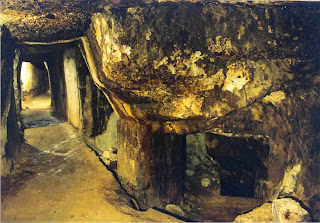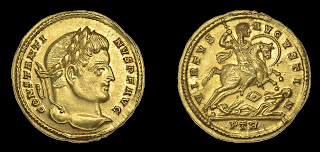Mansa Musa (reigned 1312 - 1337) was the ninth mansa (Mandinka word, generally translated "king") of the Mali Empire. The Mali Empire of West Africa thrived from 1235 - 1670 and included what is now Gambia, Guinea, Mauritania, Senegal, and of course Mali.
Much of the history and lore that has come down to us about the Mali Empire is from the 14th century North African traveler Ibn Khaldun and 14th century Moroccan traveler Ibn Battuta.
Mali had two resources for which the world hungered: salt and gold (and to a certain extent, copper). Salt was sometimes more important than gold, especially south of Mali where it was scarce and needed for people's diet. Ibn Battuta reported that the salt mines were in the desert where there was nothing else, no trees. Those who worked the mines cut the salt into slabs from which they built their huts, roofed over with camel skins. Salt was sold in slabs—two slabs per camel—and cost more the further it had to be transported.
All gold mined or found was legally the property of the mansa; it was illegal to trade gold within the borders, and all gold had to be turned over to the Mali imperial treasury. Gold as converted to gold dust, carefully measured and bagged and counted as a mithqal, equivalent to 4.5 grams. Mithqal was used interchangeably with dinar, although dinar usually referred to a coin. There are no Mali coins.
Mansa Musa became well-known across Northern Africa and the Middle East for his generosity when he, a faithful Muslim, made a pilgrimage to Mecca. This hajj covered 2700 miles between 1324 and 1325, and supposedly consisted of 60,000 men in fine clothing, accompanied by 12,000 slaves, each of whom carried four pounds of gold bars, and 80 camels, each of which carried up to 300 pounds of gold dust.Along the way, Musa paid for all the necessary provisions for his caravan. He also (it is reported) built a mosque each Friday, and gave gold and gifts to the poor and cities as he passed. He also bought souvenirs. Once reaching Medina and Mecca, he continued to give gifts of gold everywhere, knowing that he had plenty at home. Unfortunately, he gave so much gold along the way that it became devalued, inflation rose, and it took awhile for prices of gold to increase again.
His generosity also meant that, on the way back home, he ran out of money and had to sell many of his possessions and souvenirs to get back to Mali.
The date of his death is recorded by Ibn Khaldun, but there is some confusion when comparing it to other sources. It seems likely that his reign ended in 1337, and that is the likeliest year of his death. Khaldun was writing years later and doing his best from the available sources, most of which was oral stories from those who knew Musa.
Still, Ibn Khaldun was known for his contractions to philosophy and history, etc., and worth a closer look...next time















